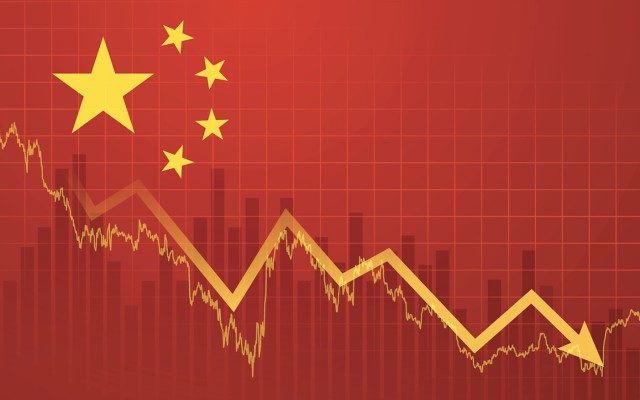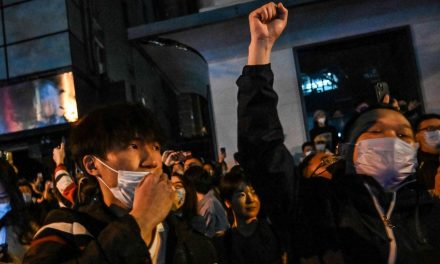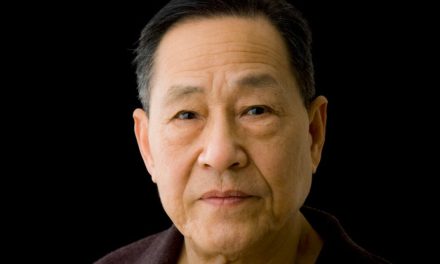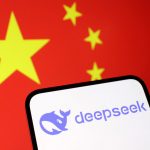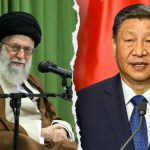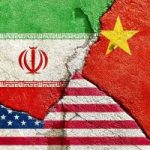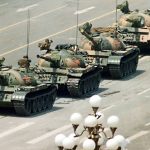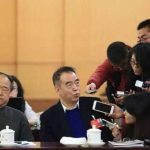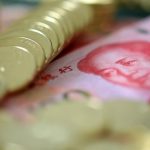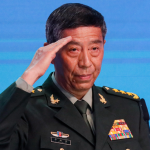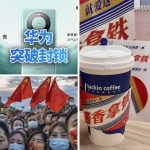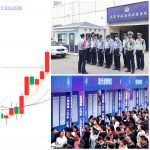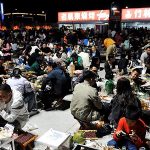By Evan Osborne
After its fanatical three-year detour into its futile attempt to prevent an increasingly infectious Covid-19 virus from taking root in the country, the Chinese government in late 2022 opened up with no warning. The virus tore through the country, leading to a death toll unknown yet surely substantial, and then daily life resumed.
As with all economic and financial uncertainty at any particular time, global investors currently have a variety of opinions on Chinese economic prospects. But the most common view has been that China is emerging from COVID with fairly robust growth. For the first quarter of 2023 the government reported GDP expanded at a 4.5 percent annual rate, faster than surveyed economists had projected. During China’s Golden Week, there was a surge in travel attributed to demand repressed during zero-COVID, although it is thought that travelers significantly limited their spending. Specific industries are projected to do well also. While thoroughly hampered by the government in the last few years, China’s hybrid social-media companies Tencent and Alibaba, which span a wider range of activities, are still seen by many analysts as having bright futures. Goldman Sachs recently predicted 6.5% growth for all of 2023, which if true would be the highest growth rate in years. Such predictions will presumably draw more funds to China from Western financial firms in the belief that it is close to the head of the class among emerging markets, a salutary development for a China whose finance industry is still relatively immature.
No one is predicting a return to to the go-go years of the 1990s and 2000s, but in the short term optimism, based on conventional macroeconomic thinking, is more common than pessimism. JPMorgan Chase, while acknowledging housing weakness and increasing debt, especially government debt, is optimistic about the pace of China’s post-COVID recovery. A report emanating from Davos indicates that Asia, and notably China, will lead world recovery post-COVID. On balance, says Market Watch and citing financial forecasters, Chinese growth should outperform earlier estimates. A report in Barron’s speaks favorably of the prospects of Chinese companies listed in the U.S. Of course for every short-term China optimist there is a short-term China pessimist.
But there is another, dire view, unrelated to short-term business-cycle considerations. It contends that the Chinese economy has permanently come off the rails in recent years, with the off-and-on lockdowns since January, 2020 merely the coup de grace. While the overall unemployment rate actually fell modestly in April, 2023 from the prior month to 5.2%, the youth unemployment rate continued its recent rise, to 20.4%. Youth unemployment generally exceeds overall unemployment anywhere, because young people are more likely to be transitioning between jobs. (The U.S. unemployment rate for March, 2023 was 6.5%, while the overall figure was 3.4%.) Youth-unemployment rates this high over the long term in several Western European countries, e.g. France, Italy and Spain, have been seen as a sign of systemic economic dysfunction. In China, the data do not per se indicate yet that such a long-term crisis will develop. But given that emerging from COVID we might expect, as was true in the U.S., the Chinese economy to come roaring back, these numbers suggest anemic long term prospects. In addition, there is discussion of a profound mismatch at present between the skills possessed by recent college graduates and those in greatest demand in Chinese labor markets.
For a number of years both Chinese and foreign observers of the Chinese economy have asserted that the thrill of the 1990s and 2000s is gone. The Chinese government was much admired for the fact that the global financial crisis of the late 2000s had relatively little impact there, and in particular that the Chinese government engaged in very aggressive fiscal rescue, the legacy of which can still be seen in the country’s high-speed rail, airports and other newly constructed infrastructure.
China’s growth, as measured by official data, was remarkable, even unprecedented, from the 1990s until a few years after the global financial crisis. The transformation of the standard of living for much of China during this time is undeniable, powered by large-scale migration from the countryside to the cities. China is now in fact classified by the World Bank as an upper middle-income country. And yet as far back as the early 2010s scholars began to discuss whether China could avoid the so-called “middle-income trap,” in which poorer countries grow rapidly for a time before growth slows significantly, or indeed was already in it. And so we must consider a particularly dire view: that the trajectory of the Chinese economy, once thought inevitably to end where those of Japan, South Korea, Singapore and Taiwan already have, at First World prosperity, has now been irretrievably derailed, whatever the international financial community may think.
There are Chinese voices inside and outside the country that see things this way. While some are starting to appear in overseas Chinese-language media long suspicious of CCP rule (see, recently, Radio Free Asia for an example), some Chinese commentators have been asserting this for years. They emphasize four problems that Wall Street underrates in assessing the long-term prospects of the Chinese economy — public and private debt, the impact of an ongoing real-estate disaster, diminishing commercial ties with the West (significantly driven by Xi Jinping’s direct wishes but facilitated by growing Western skepticism of China as a profitable place to produce), and chronic unemployment. Pace this school of thought, under Xi Jinping’s rule in particular the Chinese economy has deteriorated, and will continue to do so unless fundamental changes are made.
Debt
As the pessimists tell the story, China is now crippled by both public and private debt. In the telling of Wang Jian, a financial journalist covering business and economic matters in the Pearl River delta for many years before migrating to the United States, where he currently lives, Chinese governments at the provincial or lower level, have been crippled, substantially due to often-mandatory COVID-related expenditures and the big decline in income from that previously available in large amounts from the selling of land-use rights. This has led provincial and local governments in recent years to issue an extraordinary amount of debt. This fiscal debt, largely non-transparent, is increasingly unsustainable. The recent announcements of “reform,” i.e. substantial spending cuts, in health care for the elderly in some urban areas (e.g., in Wuhan in February) is said to be a symptom of this distress. Private debt too is thought in recent years to have reached unprecedented post-reform levels, with the ratio of such debt to GDP currently estimated at 137%, exceeding that of famously profligate Americans at 95%. Debt servicing as a share of household income is similarly high.
For UBS economist Tao Wang (汪涛), who has a generally optimistic assessment of China’s longer term prospects, China’s debt levels are not problematic because the debt is not generally held by foreigners. But another member of the dire school who has a different view is Xu Chenggang (许成钢), trained as an economist and currently Senior Research Fellow at Stanford’s Center on China’s Economy and Institutions, who has long written on China’s economic transformation. In his interpretation, public debts might well be unrecoverable because most debt is not incurred through the issuance of bonds (although bond debt has been increasing in recent years as well), but through borrowing funds from banks using government-owned real estate or shares in state-owned enterprises as collateral. In his view this is a situation very vulnerable, if the value of those assets falls substantially, to crisis.
Real estate
And how likely is such a collapse? While a real-estate bubble to Americans may call to mind the 2008 financial crash beginning in the housing sector and the subsequent substantial but short-term economic wreckage, the popping of financial bubbles more broadly may be the spark that sets off long-term economic stagnation, with Japan in the early 1990s being the reference case. Some in the dire school believe the inability of the Chinese government to intelligently regulate the housing market both during its own housing bubble in the 2010s, when the government limited price increases, and now during its ongoing popping, which the government is trying to mitigate, will destroy the wealth of many Chinese, both from collapsing prices of homes they do own and from housing they paid for but will never be built. It is clear that developers hemorrhaging funds are defaulting on debt at an increasing rate. Some, e.g. KSG Group Holdings, have already defaulted on dollar-denominated debt. Others, notoriously the collapsed giant Evergrande, have only avoided disappearing because of government rescue and restructuring measures.
Decoupling
Measured by national-accounting aggregates as reported by the World Bank for 2021, namely imports and exports combined divided by GDP, China is not unusually dependent on trade — substantially less than Germany, Italy, or the Republic of Korea, although Hong Kong (reported separately) is an exception. And yet, as was true in the less well-known long Chinese boom in the late 19th and early 20th centuries, foreign firms since 1979 have played a large role in coastal cities, and in increasing the exposure of Chinese firms to foreign ways of doing business and to commercial vitality more generally. The two-sided, growing hostility to international commerce on display both by Xi Jinping and Western governments (especially the U.S.) is already having very toxic effects on Chinese growth. There are already signs of falling orders for Chinese merchandise exports. Official data from the Chinese government indicate that in February 2023, after COVID restrictions were ended, year-on year merchandise exports to the U.S. fell 23.8%, while merchandise imports from the U.S. fell 5%; for the EU countries exports fell 12.2% and imports decreased 5.5%; and for Japan exports fell 1.3% while imports fell 23.1%. There are also reports of foreign companies moving factories to India, Southeast Asia, Mexico, or even to the home country. Some links in complex supply chains are also being rebuilt elsewhere. Online commentators recently paid a great deal of attention to the Canton Fair in April, 2023. This is an annual business exposition in Guangzhou, and overall orders were substantially down from 2019, the most recent pre-pandemic year. Orders from Western buyers for Chinese manufacturers are thought to have fallen substantially below 2019 levels, although the Chinese government, as is its wont, indicated that the fair was a great success, whatever the data might say.
Because of perceived security risks in both Western nations and China, this emerging decoupling is said to be attempts to substantially decrease the new vulnerability emanating from the extensive economic ties between the West and China that flowered during the era of reform and opening up. In addition to general trade flows, there are already active efforts to limit Western financial investment in China, and to limit trade in particular strategic industries. For high-end semiconductors and the machines to make them, such limits have already been imposed by key manufacturers in the U.S., the Netherlands, Japan, Korea and Taiwan. In the U.S. case in particular there are now even measures to restrict the ability of Chinese to come and study fields seen to have military value, in conspicuous contrast to the attitude that prevailed after 1979, and before that during the late nineteenth and early twentieth centuries. This pattern of escaping entanglement with China is especially pronounced in Japan. While much of this work has been accomplished, and China throughout the era of reform and openness amassed a good deal of world-class technological, engineering and scientific talent, in isolation and especially under CCP direction their ability to innovate according to Chinese circumstances, as opposed to CCP directives, will be limited. What the CCP wants and what is most beneficial for the Chinese people are two different things. This decoupling deprives the Chinese people of the myriad benefits of international engagement, and bodes poorly, the dire view says, for its economic future.
Unemployment
Is China about to face depression-level unemployment? The official data say no, but in addition to the high youth unemployment noted in the introduction, anecdotal reports indicate that numerous factory workers who returned home for the 2023 lunar New Year (some for the first time since COVID-19 exploded) remained there rather than return to cities for jobs that were now almost impossible to find. The China human-rights research group China Change reported that the provincial government of Guangzhou now plans to send several tens of thousands of young people, notably recent college graduates, to rural areas to train people living there in marketable skills. While the direction of allegedly desired training ran the other way then, from the rural masses to urban youth, the plan is reminiscent of efforts during the Cultural Revolution to siphon off feared urban discontent by sending youth down to the countryside. (One such migrant was Xi Jinping.) Such extreme steps are suggestive of fears of prolonged economic stagnation.
Another sign of diminished economic prospects, at least in the private sector, is the rising interest among the young in government jobs. In China as elsewhere, such jobs are far more secure than those in private companies. That feature has been particularly pronounced in recent years, as the government reins in private economic activity seen as a threat to its stranglehold on power, from Ma Yun’s IPO for his Ant Group, whose plug was pulled just days before it was to occur, to a crackdown on private-tutoring services for the young launched in 2021. A prevailing idea in China lately has been guòjìn míntuì (国进民退), a concept in which state-owned enterprises (or extensive regulation of private ones) are more and more displacing the more-unregulated private companies that created, built on the energy of the partly economically liberated Chinese people, the country’s economic miracle.
Population
And this view does not even consider a basic pillar of development economics, that development manifests as increasing desire of entrepreneurs to build factories for a growing (usually urban) population that desires to work at them, motivating more entrepreneurship and creating a virtuous cycle. But China is, says the dire view, a country facing the interrelated problems of increasingly poor employment opportunities in the urban private sector, a sector full of people who even amid the housing slump cannot afford to buy homes, both public and private debt overhangs of unknown dimensions, and decreased economic engagement with the most advanced economies in the world. When China’s rapidly aging society (the government recently confirmed its first annual population decline since 1949, while the University of Wisconsin’s Yi Fuxian estimates the population has actually been declining since 2018) is added to the mix, China’s long-term economic prospects are worse, not least because entrepreneurship and comfort with economic dynamism are primarily traits of the young. In addition to China’s substantial world-class scientific and technological talent, its government has the funds to lure more, both expatriate Chinese and foreigners, from abroad. But it also is increasingly inclined to displace private initiative by more government direction over what would otherwise be the common experience among successfully developing countries of continuous, decentralized spontaneous reorganization of society. The CCP, in other words, is simply unwilling to let its talent run free. Its population structure does not look like what one would expect in a society whose people are confident in their future.
Conclusion
A few still in China have been able to voice these concerns. Sun Liping (孫立平), a long-time sociologist at Tsinghua University who writes in Chinese, has written about the economy fragmenting into a dualistic structure, long the bane of countries attempting to develop. In his analysis of the Chinese case, large companies either owned outright by or closely controlled by the state, and fitting into the CCP leadership’s current strategic vision, are now doing well because of privileged access to funds. In contrast, the majority of the Chinese population that has to get by outside these relatively small economic refuges is now, in conspicuous contrast to the 1990s and 2000s, struggling to get by. If true, the contrast with the experience of other Northeast Asian countries, where for decades a rising tide really did lift all boats, could not be more vivid.
The factors outlined here substantially come together too for Xu Chenggang. In his interpretation, when thinking about China one must begin by acknowledging its still-substantial poverty. The country’s previous prime minister, Li Keqiang, announced in a burst of candor in 2020 that 600 million Chinese were living on less than US$5 a day. Xu argues in an interview that in China “household income compared to GDP is the lowest in the world.” Pre-2020 visitors to major Chinese cities could see undeniable evidence of significant wealth, but there is substantial inequality in China. This problem is particularly pronounced in rural areas, and Xu could have added, though did not, the aforementioned observed stark increase in migration by people previously working in urban factories back to their rural villages. The decreased attractiveness of rural-urban migration now means the virtuous cycle followed by other countries, in which a growing economy has entrepreneurs creating firms and a growing labor force reinforcing each other, appears to be broken, Nonetheless, while the default view, particularly in Southeast Asia (Chinese), is that China’s rise is inevitable, and accommodation of this fact therefore imperative, this dire view indicates that how the CCP and the Chinese people might react to both domestic economic and international status decline is also something that people should plan for.
Note that the dire hypothesis does not deny the possibility that specific industries in China can and will produce cutting-edge, globally competitive products, for example cars (particularly electric cars) or surveillance technology. All that is needed for that is resources, including human resources, and enough government tolerance of entrepreneurial freedom, at least there. China’s substantial science and technological talent, fettered though it is, makes this unsurprising. However, for the economy as a whole, the country’s prospects in this view are now substantially and permanently diminished. And so, while the view is still a minority one among Westerners whose job, whether in the world of ideas or in finance, who keep track of Chinese economic developments, it is one that merits attention. The Chinese race to prosperity, once so inspiring, may be over, well short of the finish line.
And the analysis here has not even considered the somewhat separate question of whether a significant fraction of the Chinese people has entered into a sort of spiritual crisis, deriving from their having lost faith in the promise of the Chinese model. Before Xi Jinping Chinese leadership, while not the least bit reluctant to crack down on any domestic threat to their rule, had since Deng Xiaoping emphasized cordial economic and political relations with most of the rest of the world, and to that end was reluctant to be confrontational. Under Xi though, between all the wolf-warrior diplomacy and the aggressive attempts to unilaterally change the geopolitical situation in the Pacific and on mainland Asia, whatever other nations may think, one wonders about the extent to which Chinese themselves are concerned about the direction of their country. China, especially its youth, is now in a position to make more and more contributions to global technological and scientific progress. But as China separates from the West amid the growing perception of the former by the latter as an emerging threat to the successful (not least for China, once it joined it) postwar liberal order, it is an open question (although no one will say so) whether China must be quarantined to at least some extent. Given this, along with the other self-inflicted wounds imposed by Xi Jinping’s CCP, one wonders how much the Chinese people will resent the isolation and poor economic performance as something profoundly undesirable, and as imposed on them by their own government. To be sure, Chinese have imbibed increasingly potent nationalism under Xi, and like any people there is a fraction of the population there that takes enthusiastically to it. But between growing isolation from the West driven from both ends and the tangping (“lie down”) movement, in which young Chinese reject the stifling demands of the workplace and even refuse to start families (which Harvard faculty member Steve Kelman recently downplayed as merely a “recent craze”), one wonders whether the feeling is growing among Chinese themselves that the Chinese economic and social model is bankrupt. (Genuinely informative public-opinion surveys in China are of course next to impossible.) If Chinese people, justifiably proud of their achievements in the last forty-plus years, wish to contribute to the world rather than snarl at it, but are rendered unable to do so by their own government, the country’s problems will go behind the merely economic.
As noted above, this dire account meshes to some extent with a minority view among economists specializing in China that the country is mired in the same sort of middle-income trap that countries such as Brazil, Argentina and South Africa are said to be examples of. The problem arises, the conventional wisdom says, because countries for a time grow rapidly because of a competitive advantage in standardized mass manufacturing, but then are unable to transition to more uncertain innovative activities that occur at the technological frontiers. But in the Chinese case, conspicuously unlike several other nations in that part of the world, there is totalitarian control over the economy, wielded in part to prevent the bubbling up of any threats to the CCP’s rule, including that generated by decentralized economic experimentation. The factory and the Internet were two dramatic examples of this. Entities like Ma Yun’s Ant Group, which promised to remake Chinese finance to the very possible detriment of China’s big state-owned banks, might be another. But such innovations cannot be permitted in CCP China. And so in the end, the dire view has it, for a variety of reasons, without a major remaking of how the country is governed the Chinese miracle is over, and its problems may be just starting.

